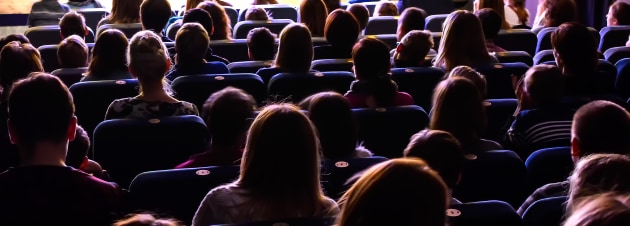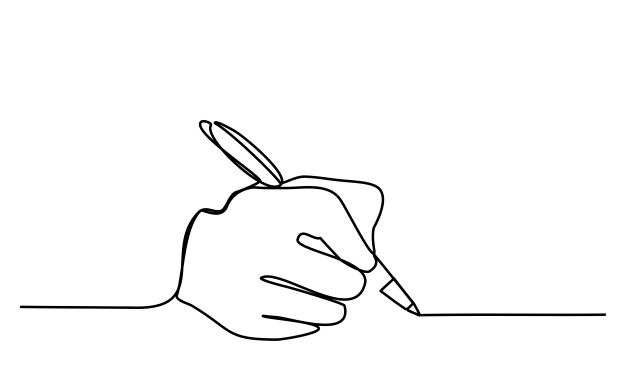The choreographer, the critic and the dog poo
Choreographer Marco Goecke's attack on critic Wiebke Huester raises the question of the role of the critic in our culture, writes Karen van Ulzen.

Why would you want to be a critic? It takes a lot of courage to put your opinions out in the public arena, especially when your opinion is not a favourable one. Then you will make yourself unpopular, even despised. In fact, if you are a "popular" critic, then quite possibly you are not doing your job right.
Take the shocking case of Wiebke Huester, a critic for the Frankfurter Allgemeine newspaper, a leading, national broadsheet newspaper in Germany. She reviewed an important premiere of a new dancework by Marco Goecke, choreographer and artistic director of the Hannover State Ballet in Germany. Called In the Dutch Mountains, it was his first full-length creation for the Netherlands Dance Theatre, where he is also an associate choreographer.
Huester wasn't impressed. "Watching, you're driven mad and bored to death. Here and there are occasional inspired and coherent minutes," she writes towards the end of her review. "The piece is like a radio that hasn't been properly tuned in. It's a disgrace and an impertinence ...
"The best abstract choreographers produce an inner-worldly pull, in which stage personalities really unfold and their movement and glances enable a meaningful, dense weave to emerge. Only by working with such intensity and communication could this unconcentrated and disjointed piece have been saved."
Goecke's reaction? The next time he saw the critic, at interval in the theatre foyer, he attacked her with a handful of dog poo, smearing her face with it.
There is no excusing the choreographer's appalling behaviour. He committed an assault. Police are investigating. He has since been sacked from his post at Hannover. NDT is taking a less punitive approach: it has let him keep his position and is continuing its tour of Holland with his work, but with a statement on its website that "it deeply regrets the incident" and that it "values the journalistic freedom of reviewers".

Goecke has also apologised publicly for his "absolutely unacceptable action", but nonetheless defends himself: "I would like to state that in this post-Corona period, which is difficult for theater, it would be appropriate for all media, including the feature pages of renowned print media, to reconsider a certain form of destructive, hurtful reporting that damages the entire cultural enterprise. Behind every theater production are many people who give their heart and soul to it.
"In an age that reacts so sensitively to everything we do and say, even cultural criticism – and this expressly also under the indisputable premise of freedom of opinion and freedom of the press – must ask itself where it violates the boundary to insult, to denigrate works, to mobbing, to attempting to create negative opinions and to damaging business."
Wiebke is certainly not the first critic to be accused of jeopardising artists' livelihoods. The relationship between critics and artists has always been fraught. “Critics are to authors what dogs are to lamp-posts,” as American author Jeffrey Robinson once said, presumably after a damning review. So what is this tradition of inviting a writer to pontificate in public about an artist's precious creation, sometimes with damning results? Why do we continue with it?
Newspaper criticism is published within the context of newspaper journalism, which reports and comments on important news and events, conveying information and "describing society to itself", as the Australian journalists code of ethics says. Journalism's role is to scrutinise so-called facts and hold those in power to account. This is no less so in the arts pages. In civilised countries the arts are unquestionably a part of society and therefore should be treated as equally as any other part of society. Art, just by virtue of being art, doesn't put it above the same scrutiny or criticism. Indeed, artists would be offended if newspapers ignored them and their activities.
Furthermore, much of the arts is funded by the taxpayer. Governments spend squillions building huge art institutions and audiences often pay big dollars for tickets (which are also government subsidised). Therefore, it is undoubtedly in the public's interest that it receives a fair and honest opinion on how well their money is being spent.
In addition, artists and arts companies often make huge public claims for their products. Massive budgets are devoted to marketing and publicity: to attract audiences, of course, but also to ensure the product is well received – audiences are told what to think before the work even reaches the stage. A critic acts as an important counterweight to all the hype, offering an independent view that is not controlled by the persuasive might of the publicity machine. Sometimes that means the critic is a very lone voice against the marketing tide.
A critic's responsibility is two-fold. The first is to their readers – the public. They must give their reader their honest opinion. If the work was disappointing or poor quality, they must say so, and explain why. To disguise the truth for fear of hurting the artist's feelings (or because the artist has had a tough time lately), is to let down the public and lose their trust. It undermines the critic's own integrity and reputation.
The second is to the artform: it is the critic's job to expect and to demand high standards. Would artists genuinely want their audiences to be happy with lower standards, to accept a product that is less than they are capable of? I don't think so. While Goecke might complain that "destructive, hurtful reporting damages the business" of art, he must recognise that neither does it help the "business" of art if the product being served is second-rate. The criticism might well turn audiences away, but so will the artwork itself.
Criticism also acts as a useful conduit between the artists and the audience. The critic represents the audience – a well-informed, educated member of the audience. Critics can serve a role in building an educated and informed audience while also providing the artists with a sense of how their work is being received from out front, unfiltered by the views of their own collaborators and admirers, which can be self-serving. When an artist has finished creating their masterpiece, they have indeed put their "heart and soul" into it, as Goecke says; it follows that they can be too deeply involved, and the work too personal, for them to be "objective" about it.

When an arts company invites a critic to review a performance, it takes a gamble. The company accepts that critics are free to voice their own opinion and that the opinion might not be flattering. But it works both ways: the company knows that if the review is good it can be used in future publicity and to boost more sales. They also know the review is more valuable if the critic has a reputation for being uncompromising.
Despite his pleas for his sensitive creative soul, Goecke is in a privileged position – in having a company like NDT at his service, in having such a fantastic platform to present his work. Countless other choreographers would give their right foot to be in his position – post-Covid or not. In making his work, Goecke gets to have his say – he should let the critics have theirs. Free speech is what happens in a democracy and criticism a consequence of public life. If Goecke's violent act succeeds in frightening away his critics, then he has done his artform and himself an enormous disservice.
The tradition of criticism is a vital part of Western societies' cultural infrastructure. It shows that art is taken seriously and considered a vital part of our lives; it means that art matters enough to write about. The ensuing debate and discussion informs the culture and generates more thinking about the art. Woe to the country whose art is ignored, unreported and undiscussed.
Stay up to date with news and reviews! Subscribe to our e-news: just go to our homepage and click the Newsletter Signup box. It's free!


